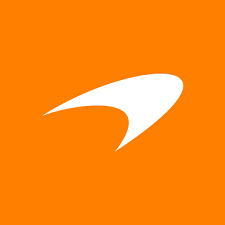Evolution in Stereolithography 3D Printing
Stereolithography (SLA) is a long-established method of 3D printing, but over time the performance and reliability of older SLA systems suffered. They became outdated and parts degraded.
Then, the Neo arrived.
Built by engineers for engineers, it’s now regarded as best-in-class stereolithography 3D printing. This is the story of stereolithography, the Neo’s inception, and the problems it overcame to become the gold standard.

Stereolithography 3D printing was invented and commercialized in the 1980s, earning it the accolade of being the most established 3D printing technology
SLA was a novel alternative to traditional methods of manufacturing for prototyping, tooling, and master patterns. By using UV light to cure photosensitive polymers, prototypes and parts could be built up from a vat of resin.
SLA became celebrated throughout the manufacturing world for producing accurate, detailed parts. Designs could be repeated quickly, and over time laser technology developed and the range of resins available improved. Stereolithography inevitably became the go-to 3D printing system for designers and engineers.
Improvements Were Needed
Due to the ease and speed, designs could be iterated faster. Complimented with an array of materials to suit specific applications, stereolithography was now an indispensable tool for manufacturers. They could see tangible benefits from stereolithography – it saved time, money, and accelerated products to market faster. Designers could now visualize their concepts, print straight away, and refine immediately. Design-to-manufacture time that once took weeks or months, now took just days.
But over the following decades the reliability and productivity issues of these ageing workhorse SLA printers were becoming outdated.
As the applications of 3D printing in industries broadened, the need for pinpoint accuracy and finer detail increased. Engineers wanted smoother sidewalls that they didn’t have to manually sand down. Designers wanted to print faster; managers wanted less downtime. Machines were becoming unreliable and service call outs were frequent and costly. Materials were being developed all the time but many users were locked into using specific brands.
Users were demanding a system that focused on print quality, reliability, and performance. Improvements in SLA were desperately needed.
Introducing the Neo


A small group of engineers who serviced these legacy SLA 3D printers listened to customers’ frustrations, saw a need for improvement, and identified a gap in the market.
A new generation of stereolithography printer technology was born: the Neo.
The core principles driving the development of the Neo was a system using the best components, that was reliable and easy to use, and produced parts with superior sidewall quality.
The Neo’s creators wanted a solution that was fast, reliable, and that made 3D printing more affordable:
- Their design approach was to minimize complexity to achieve high reliability.
- A state-of-the-art laser and industry-leading scanning system improved the speed and quality of part produced on the Neo compared to legacy SLA printers. Parts were more accurate with a smoother finish that dramatically reduced post processing labor requirements.
- They adopted an open resin system, which offered customers greater flexibility, efficiency, and cost-savings.
- They understood the importance of simple day-to-day use for the operator and comprehensive reporting capability for the department leader.
Next-Generation Stereolithography

Designed by engineers for engineers, this deep understanding of SLA technology positioned the Neo as the new generation, offering peace-of-mind stereolithography to customers.
Now you’ll find the Neo Series of stereolithography 3D printers in a wide range of sectors, supporting the workforce of household brands worldwide with prototyping, rapid tooling, and investment casting.
Here at Purple, we love our Neo450 because it allows us to print intricate and smooth models, varying in size and quantity, at faster speeds. To learn more about Stereolithography or the Neo Series 3D Printers, give us a call at 949.474.9222 or email us [email protected].